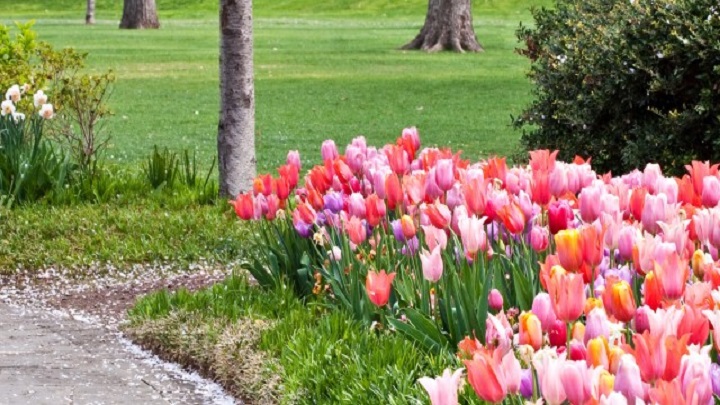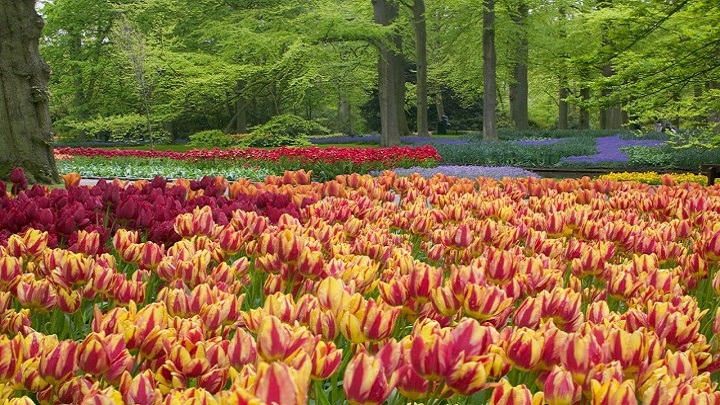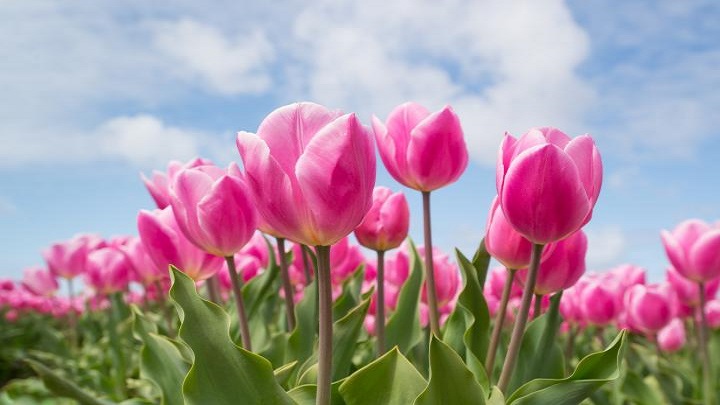Maintaining the perfect garden is not an easy task. Here are 5 tips for planting flower bulbs that will bloom beautifully in spring even if you do not have a green thumb.

1. Choose the right flower bulbs
Even before planting flower bulbs, you have to make the right choice. This can facilitate the growth of your bulbs and ensure you get a beautiful flowering.
- As a rule, choose the largest possible bulbs and check their firmness.
- If the bulb is soft or shows traces of mold, it may be a sign that the bulb is not in good condition to produce a flower.
You may also like to read: 9 tips for fruit plants in your garden
2. Plant them at the right time
For most flowers, autumn is the best time to planting flower bulbs.
- Gardening articles stores generally start selling flower bulbs during the summer months.
- Now, you can also make bargains in late fall, while stores are looking to get rid of their stock.
- Several types of flower bulbs, such as tulips, hyacinths, and narcissus, can be planted in late autumn.
- However, some ephemeral plants and other varieties must be planted in early autumns, such as snowdrops, crocuses, and anemones.
- Find out from your gardening shop to find out when to plant the bulbs you buy.

3. Dig at the right depth
Flower bulbs exist in several different sizes and this can influence the depth at which you will plant them.
- Measure your bulb and plant it at a depth equivalent to three to four times its size.
- For example, if your bulb is 3 cm, you should plant it between 9 and 12 cm deep.

4. Plant them in the right direction
Many people wonder in which direction to planting flower their bulbs and this detail is paramount for certain types of flowers.
- You should plant the tulips, daffodils, and alliums with the pointed side of the bulb upward.
- If you are unsure of the right way to plant a bulb, it is often acceptable to plant it on the side because the flower will usually be able to find its way into the soil to reach the surface.

5. Knowing where to plant
- Some bulbs, such as wood anemones, snowdrops, and lilies in the valley, grow well in the shade because they come from forests where sunlight is limited.
- Otherwise, most bulbs, including daffodils, tulips and grape hyacinths prefer to have plenty of sunshine.
- Try to plant your flowers in an area with at least eight hours of the sunshine per day, unless they are the rare kinds of flowers that prefer shady conditions.
In the end, flower bulbs are the key to a beautiful garden. By following these tips, you will get beautiful flowers year after year.
You May also like Wikimodel.org




Average Rating